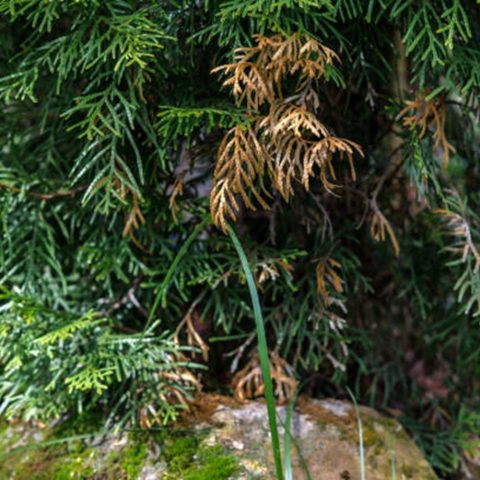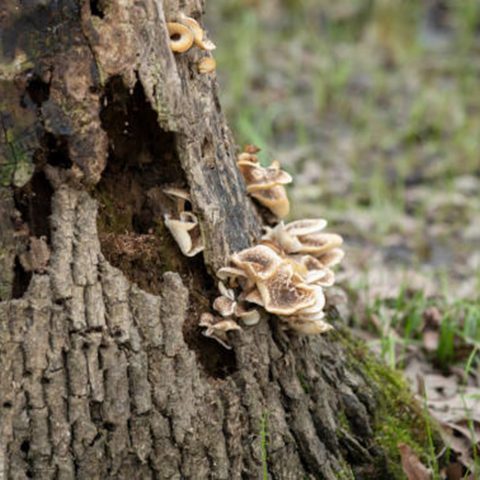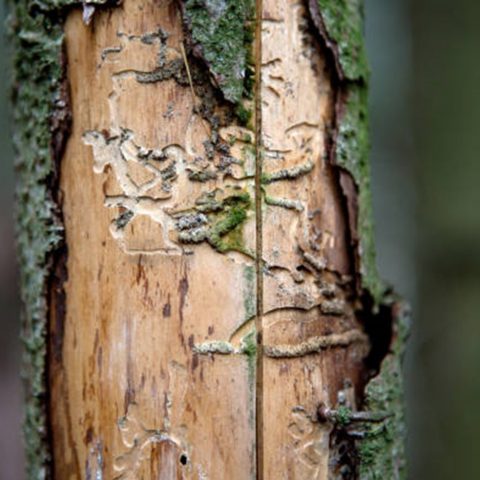It is not always as easy as you would imagine knowing whether or not a tree is dead. In winter especially a dormant tree might look dead but will open out into full leaf and vigorous health the following spring.
Trees do not die overnight, in fact, an oak tree is reputed to die over a period of 300 years, so if you have concerns about any tree there is plenty of time to seek advice from a reputable tree surgeon. An experienced tree surgeon can reduce the pressure on an ailing tree by pruning or dead wooding and can, in some instances, assist it to regain full vigour.
What is dead wooding?
Similar to the deadheading of smaller plants by removing dead flowers, dead wooding involves removing dead branches and limbs from a live tree. This helps keep the tree as healthy as possible and reduces the risk of large branches suddenly falling from the tree and potentially injuring anyone underneath it. Dead wooding is best carried out by a qualified tree surgeon such as Take A Bough.
Tell-tale signs of problems with tree health
Failure to thrive
One of the initial signs that all is not well with a tree can be a failure to thrive, with few leaves and buds, or no leaves at all. Many fallen twigs and branches under the tree can be a warning sign. Since deciduous trees do not shed their leaves or needles all at once it is more difficult to tell if they are healthy but in spring, they should look fresher and greener. Browning of the needles is a poor sign.

Is the tree leaning?
If the roots of the tree have been damaged by erosion, excavation work nearby or by compacted soil that has been loosened by heavy rain, it means that the roots are not strong enough or sufficiently deep in the soil to keep the tree upright. If the roots are weakened epicormic shoots can form at the base of the trunk indicating that the tree is under severe pressure.
Is fungus a problem for trees?
Mushrooms, toadstools and other fungi growing on the tree can be another sign of problems. Fungus grows on dying organic matter and may colonise the roots of trees as well as the trunk and branches. However, some species of bracket fungus, like chicken in the woods, colonise both dead and living trees and are not a major cause of concern.

Split and peeling bark
Split or peeling bark or cracks in the tree trunk can admit disease organisms. Most notably, in recent years, the ash dieback fungus has been destroying Europe’s ash trees. If you have an ash tree in your garden it will almost inevitably die or be in the process of dying and a tree surgery team will be required to remove it.

How can I check my tree’s health?
Apart from a visual check – are the leaves healthy-looking, is there fungus on or near the tree? – there are more certain ways to ascertain whether your tree is failing. If you try to snap a twig or small branch and it shatters or breaks off then the branch will probably be dead although that does not mean the whole tree is dead. If the twig is pliable and bends to an angle of 90 degrees and whips back then it is moist and healthy.
Removing a small piece of bark from a tree so you can see the cambium layer that lies directly underneath is a good indicator of health. If the layer is green and damp then the layer is performing its function which is to deliver water and nutrients to the whole of the tree. If the cambium is dry and brown and the bark falls away easily then it is likely that the tree is dead or dying. Wounding a tree in this way is not ideal and a professional tree surgeon will know how to do this causing the minimum amount of damage to the tree.
Should a dead tree always be felled?
A dead tree can be unsightly and may cause damage to surrounding structures or injury to people if it falls, and if it is diseased there is the potential for the disease to spread to nearby trees. This is particularly true for ash trees that have been killed by emerald ash borer. The wood becomes very brittle and branches or whole trees can fall without warning, so professional attention is always necessary in case professional tree felling and removal are ultimately needed. However, where these dangers can be ruled out a dead tree can be an important ecological resource providing nesting and breeding places for beneficial insects and birds.
Take A Bough Tree Care’s Tree Inspection Service
Take a Bough Tree Care’s experienced and qualified tree surgeons will inspect your tree carefully to determine what the problem is and discuss your options with you recommending the most suitable course of action. In an urban environment like London, every tree is a precious resource and has sentimental, environmental and aesthetic value and we will do all we can to save a tree wherever possible.
Whether you have a single tree or multiple trees and you are in South West London and require the services of an experienced team of tree surgeons, give us a call by clicking above, or complete our contact form so we can get back to you about providing a free quotation for all your tree work – we will be very happy to hear from you!

